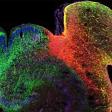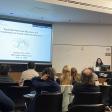The Paredes Lab studies the cellular and molecular basis of perinatal human brain development with the overarching goal of understanding the cellular and anatomical architecture that underlie the unique functions of the human brain. We seek to advance ways to both directly investigate the human brain and to better model its development, using gyrencephalic brain model systems such as the piglet cortex. Our studies also focus on a poorly understood yet clinically important time in brain development, the perinatal period. This developmental window is of high interest in understanding the early formation and function of higher associative cortical areas, such as the prefrontal cortex and superior gyrus. Our overall objective is to provide new insight into how the complex gyrated brain forms and how this process may be vulnerable to perinatal injury, resulting in neurodevelopmental disorders such as Epilepsy and Autism Spectrum Disorder (ASD).


